


|

|
www.cjtu.org |
May 2023 |
General MeetingTuesday, May 9th, 2023
Note: Around 7:30 pm John will do a hands-on tying session, demonstrating the steps of dressing basic Spider flies.Get to the hall early if you want to atend this session!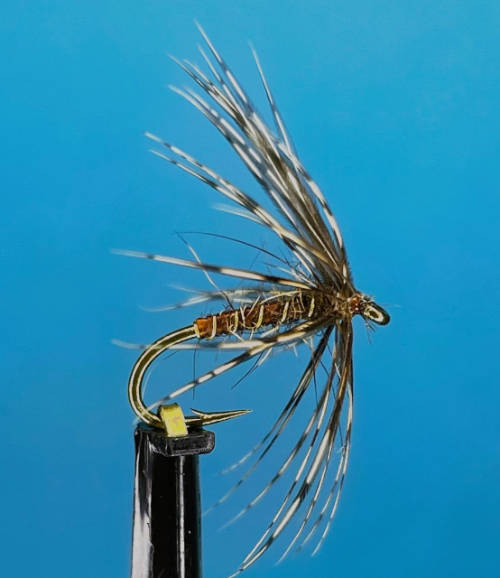
John Shaner’s presentation will cover the history and development of Spiders and Soft Hackle flies on both sides of the Atlantic, as well as their materials, tying, and fishing techniques. Around 7:30 pm John will do a hands-on tying session, demonstrating the steps of dressing basic Spider flies . He will cover simple thread bodied and dubbed Spiders. John grew up in a fishing family on the shores of Skaneateles Lake in the Finger Lakes region of New York State, he has been an avid angler even as a youngster, and caught his first trout on a fly he tied himself in 1966. The gift of a fly-tying kit when he was eight set him on the road to becoming a fly tier. Although he is primarily self-taught, he has studied many different fly dressing techniques and has been privileged to have sat at the elbow of many famous fly tiers. While he dresses many different fly styles to suit the rivers he fishes, he especially enjoys reproducing and using traditional trout patterns. Catskill style dry flies were his first interest, but in the past 25 years his focus has been on British wet flies. John has developed a profound interest in “Spiders”, which Americans call them “Soft Hackles”, and he enjoys tying and fishing these simple, elegant, and deadly flies. While he likes to experiment with new patterns, he is a bit of a traditionalist in his use of materials and seldom incorporate synthetics into his flies, preferring to use natural silk, fur, and feathers. 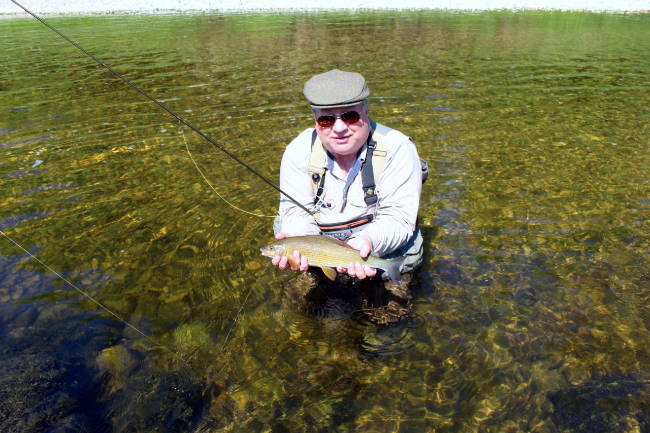
Another of John’s passions is collecting classic fly tackle and angling books. His interest in tackle reflects his pursuit of free-rising trout and a love for fishing both dry flies and wet flies near the surface. John’s angling library contains over 2000 books and publications dating back to the 18th century. The collection is primarily focused on works detailing the development of trout flies and tying techniques but branches into many other aspects of fly fishing as well, especially the history of the sport and its literature. John began exploring the Catskills as soon as he had a driver’s license and in the years since he has fished for trout across the US from Maine to Oregon, Michigan to New Mexico, and he has made a number of trips to the UK to fish the famous Chalk Streams and other rivers. John has a special love for Montana and Wyoming, and lived in West Yellowstone, Montana during the 1990’s where he managed a fly shop and guided clients throughout the state and in Yellowstone National Park. His favorite rivers are the West Branch of the Delaware and the Beaverkill in New York State, the Firehole and Madison system in Yellowstone National Park, the spring creeks of Paradise Valley in Montana, and in England, the Itchen at Abbots Worthy in Hampshire, the Rivers Eamont and Eden in Cumbria, and the Wharfe in Yorkshire. He has also fished the Bahamas, Belize, and Florida for saltwater species. Most of his working career has been spent in the fly-fishing business where John has managed fly shops, guided, and worked as a sales representative for The Orvis Co. and Cortland Line. Since 2008 he has been associated with Hardy of Alnwick, England. John retired in 2021 to devote more time to fishing, travel, and his collections. John is a member of The Anglers’ Club of New York, The Fly Fishers’ Club of London, The Theodore Gordon Fly Fishers, The Fly Fishers’ Club of Harrisburg, Trout Unlimited, and the IFFF. He also serves as a Trustee of the Catskill Fly Fishing Center & Museum. He currently lives in Deposit, NY, just a stone’s throw from his favorite pool on the West Branch of the Delaware River and only a few minutes from the East Branch, Beaverkill, and Willowemoc. CJTU Annual Picnic"A meeting with Food"Tuesday, June 13th, 2023
|
News & Events2023 Musconetcong River Clean-UpSaturday, April 15th, 2023The weather held up, we had a great turnout, 18 CJTU members, family and friends, at Point Mountain today for the Annual Musky Clean Up. Really great news is how difficult it was to find trash this year, the park is looking really good! Big thanks to all who came out and volunteered ! 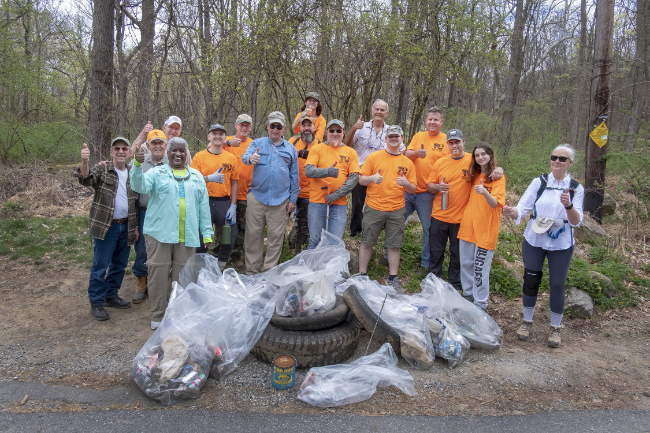
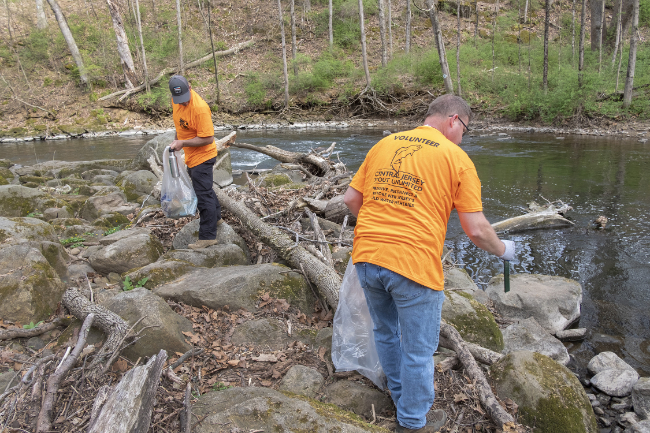

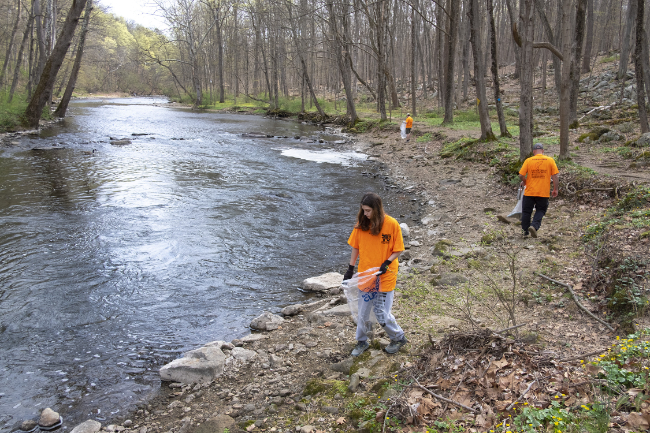
Point Mountain Stocking UpdateContinuing with the spring stocking in the Point Mountain section of the Musconetcong, the team put in another 310 rainbow trout on Friday, April 28th. This is in addition to the 900 fish stocked in March for a total of over 1200 trout so far this spring. We will have two more stockings in May on the 19th and the 26th. I want to thank all of the stocking team members who have helped out this spring. Anyone who wants to join the stocking team can give me their email address and I will put you on the list. Reports are the fishing in the stretch has been good. Ed Kordyla CJTU stocking coordinator Musconetcong River Tree PlantingWednesday, May 17th, at 9:30a.m.The Musconetcong Watershed Association will be hosting a tree planting on Wednesday, May 17th, at 9:30a.m. at a field along the Musconetcong River in the Butler Park section of Lebanon Township, Hunterdon County. Use the address 9 Butler Park Rd., Washington, NJ 07882 for reference as to where this is. The rain date will be Friday, May 19th, at the same time. The goal is to plant approximately 350 trees/shrubs along the river bank, stake them for support, and add plastic tree tubes or wire cages to protect them from the deer feasting on them. The area is flat, but will have some tall grass, so please wear sturdy footwear, long pants, and bring bug spray if you prefer to use it. Since this could be 3 - 5 hours depending on the volunteer turnout, we'll provide some food for lunch and extra beverages—but I encourage you to bring your own reusable water bottle already filled up to start! Also, if you can't make it right at 9:30, don't worry, as we'll be happy to catch you up and get you involved after the fact. Please let me know: --If you can attend this (and the rain date for planning purposes), --Whether you plan to bring your own shovel, so I know what to prepare in terms of equipment (we have some extras, as well as plenty of gloves) --If you are the point of contact for a group, let me know how many people will be coming from your group. Let me know if you have any questions. I look forward to hearing back
Best wishes,
Musconetcong Watershed Association
Email: ryan@musconetcong.org Fly of the MonthKing’s Wedge Wing IsonychiaTied by Bill Ninke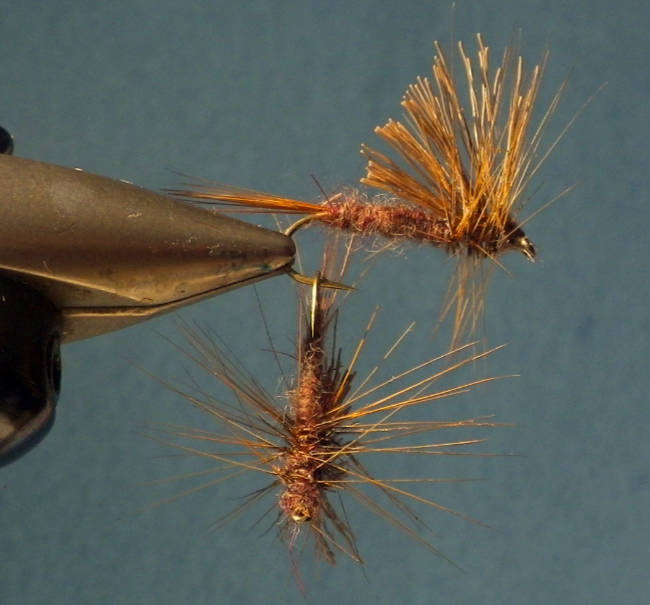
Jonny King is an attorney, a jazz musician and a very creative fly tier - real Renaissance man. If you tie salt water flies, you probably are familiar with his Kinky Muddler and his Hoo fly, both fished extensively on the Atlantic Coast. If you tie trout flies you may have run into his “Splittsville” patterns, created for suspicious Delaware trout. All the above have been widely documented in articles and videos. I first ran into Jonny at the Fly Fishing Show in 2011. He was doing a “Featured Tier” session with pre-session publicity stating he would be covering his new Kinky Muddler. Since I was about to go on a trip to the Yucatan for baby tarpon, I made sure to attend to learn that pattern so I could tie and fish it for my trip. I was immediately struck by Jonny’s very clear description of the tying steps and the reasoning behind them. Now, when the program for the International Fly Tying Symposium or the Fly Fishing Show comes out, I check if Jonny is scheduled for a ”Featured Session” and strive to attend. I strongly recommend you do so too. Jonny demoed this month’s pattern in one session two years ago. It features an in-line deer hair wing that very closely approximates the silhouette of the wing of a natural mayfly. Rene Harrop has a similar pattern that was derived from an elk hair caddis. What distinguishes Jonny’s pattern is the winding of the hackle through the wing instead of behind the wing. The hackle is thus distributed along the thorax of the fly causing it to float naturally in the surface film. The deer hair is tied in tip first and trimmed after it is incrementally stood up. Two variants are possible. A hackle fiber tail gives a straight dry imitation. A Zelon tail gives a surface emerger. Details for the dry are in the tying instructions. As you will note in the fly photograph, the wing is trimmed slightly longer than that of the natural. This is by design since the tip of the wing is the first to enter the “window” of a surface feeding trout. The longer wing extends the warning of the coming body. While Jonny uses deer hair for this Isonychia imitation, synthetics like EP Trigger Point Fibers or strands from Macrame Cord can also be used, particularly for smaller mayfly patterns. To get the pattern to sit right in the surface film, Jonny trims a V-shaped notch in the hackle underneath the body. By varying the body material you can use his technique to create imitations of mayflies other than an Isonychia. A March Brown with a biot body looks particularly attractive tied in Jonny’s style. Click here for the recipe! |
Central Jersey Trout Unlimited’s Supporters |